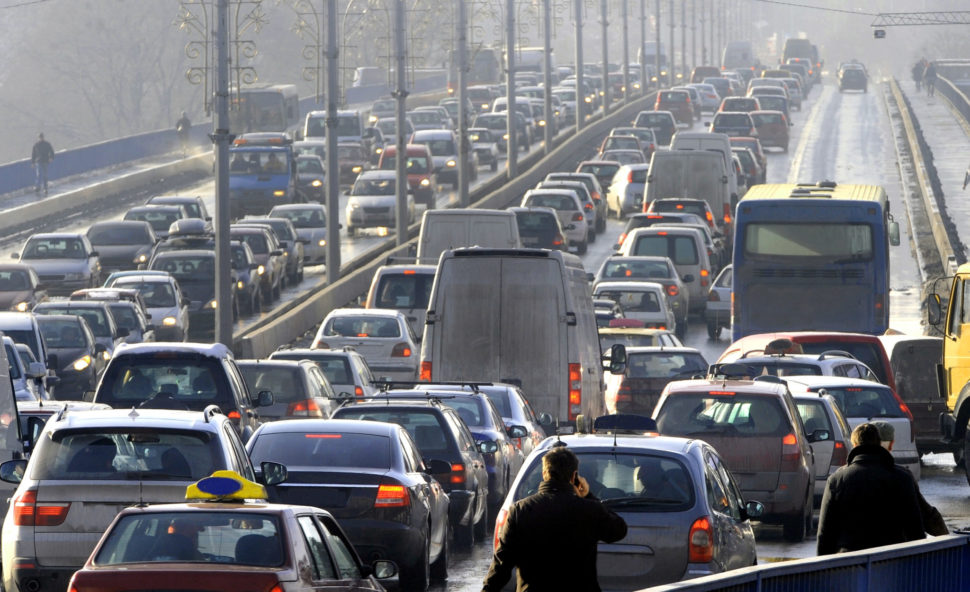Here we’ll discuss how the various automated systems in development could help alleviate our least-favorite passtime: sitting in traffic.
I’ve been told by people who didn’t grow up driving in Houston that I can be aggressive. Of course, they just don’t know what driving in Houston is like. I’m not aggressive, just committed.
Everyone has a different tactic when it comes to navigating a traffic jam. However, data from the IEEE Transactions on Intelligent Transportation Systems might show us how wrong we all are.
In short, traffic jams are often caused by drivers not keeping enough distance from the car behind theirs.
How can this information help improve self-driving cars and traffic flow?
Solve The Traffic Jam Game Using Distance
A common story of rush hour traffic often includes people getting too close to your car. It also probably includes people breaking abruptly, almost causing you to crash into them.
Both of these frustrating experiences play into why math says humans drive poorly.
We all want to get where we are going as fast as possible. We are also susceptible to emotions clouding our choices and thereby our reaction times. This, among other reasons, may explain why we can’t always keep an ideal distance relationship between cars.
Self-driving cars can circumvent some of these issues using features such as adaptive cruise control. This feature relates speed to distance for a better car-to-car spatial relationship.
Autonomous vehicles also use Lidar which uses infrared light pulses to measure distance. It works similarly to radar, but without using radio waves.
Read More: Blind Spot Algorithm Makes Driving Safer for Autonomous Vehicles
Interestingly, Tesla is one of the few driverless car manufacturers that doesn’t use Lidar. So, how does all of this help us win the traffic jam game?
Keeping the proper distance from the car behind you can improve traffic flow, according to mathematics. But there are a few roadblocks to this plan.

There’s Just One Little Problem
Self-driving cars might be able to use this information, but not for awhile.
The issue lies in the fact that this knowledge only works when there is volume. If only one or two cars on the road can maintain ideal distance, nothing will change. The concept of “emergent property” causes this and you can witness it in nature, too.
Think of when birds or bats fly in huge swarms yet never seem to bump into each other. They are aware of the group as a whole, as well as individuals close to them.
For humans, we tend to lose sight of traffic as a whole while we are in it.
Berthold Horn, the co-author of the study and MIT associate, commented on the phenomena in WIRED. It has to do with bilateral control, i.e., keeping a proper distance between the cars in front of and behind you.
But, as anyone who has spent time in traffic knows, you rarely get the perfect distance. This same issue applies to self-driving cars, as well, according to Horn.
“In terms of societal implementation that’s a big factor, because even if it’s relatively cheap, people who implement it will question whether the first car that gets it is worth that investment, because until other cars get it, it doesn’t do a whole lot of good.”
Despite this, Horn thinks carmakers will still flock to the technology.
This Isn’t Horn’s First Rodeo
Horn has a history of working on improving traffic patterns. He released an algorithm he believed could eliminate traffic jams in 2013. But, as explained in this MIT article, monocular cameras encountered some issues with his algorithm.
Perhaps now, in combination with improved sensory technology and Lidar, Horn’s theories can finally be tested. Better still: perhaps we will unlock the key to eliminating traffic jams.



















Are there traffic flow applications also for soft transport? GPS could use various colors to indicate average speed of cyclists. Pedestrians could see how crowded various areas are, either to avoid them or to notice that there might be something interesting.
Hey Uolevi! After a shallow search, I couldn’t find any traffic flow apps for soft transport, although I think that’s a great idea. I did look at a few filters for various types of traffic through Google Maps, which can be found here. They’re pretty useful and, in particular, the “appropriate/not appropriate” bike route map seems particularly useful. There is one way to use colored lines to delineate roads that are better for certain types of traffic.
This is a nifty idea. Color coordination can be very useful when it comes to transportation apps. I would be concerned about color blind people, but maybe there could be a color blind mode that operated differently?